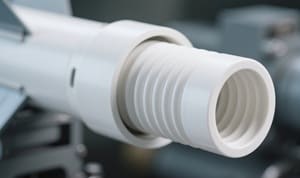Advanced Ceramics for Defense and Military Industry Applications and Trends
The defense and military industry has always demanded materials that can withstand extreme environments, from hypersonic flight to underwater detection and nuclear reactors. Advanced ceramics have emerged as one of the most strategically important material classes due to their exceptional strength, high-temperature resistance, chemical stability, and low density. In comparison to metals and polymers, ceramics enable both lightweight design and long-term reliability in critical systems. This article explores the fundamentals of advanced ceramics, their role in defense, material comparisons, applications in aerospace, armor, nuclear, and electronics, as well as future trends shaping military technology.
At Advanced Ceramics Hub, we specialize in high-quality ceramic products, ensuring optimal performance for industrial and scientific applications.

What Are Advanced Ceramics and Why Are They Critical in Defense?
Advanced ceramics are high-performance inorganic materials engineered through precise compositions and microstructural design. They include silicon carbide (SiC), alumina (Al₂O₃), boron carbide (B₄C), zirconia (ZrO₂), aluminum nitride (AlN), and silicon nitride (Si₃N₄), among others. Unlike conventional ceramics used in construction, advanced ceramics are designed for mechanical, thermal, and electronic functions.
Key Properties of Advanced Ceramics for Defense:
| Ceramic Material | Flexural Strength (MPa) | Thermal Conductivity (W/m·K) | Density (g/cm³) | Application Example |
| Si₃N₄ (Silicon Nitride) | 800–1000 | 20–30 | 3.2 | Bearings, missile radomes |
| SiC (Silicon Carbide) | 500–650 | 120–150 | 3.1 | Armor, rocket nozzles |
| Al₂O₃ (Alumina) | 300–600 | 20–30 | 3.9 | Insulators, structural parts |
| B₄C (Boron Carbide) | 400–500 | 30–40 | 2.5 | Lightweight armor |
| ZrO₂ (Zirconia, stabilized) | 800–1200 | 2–3 | 6.0 | Thermal barrier coatings |
These properties make advanced ceramics indispensable in defense, where weight savings, survivability, and thermal stability directly influence performance.
Explore our high-quality ceramic products.
How Do Advanced Ceramics Compare to Metals and Polymers?
In the defense sector, materials are selected for extreme strength-to-weight ratios and environmental durability. Metals provide ductility but are heavy; polymers are light but weak at high temperatures. Advanced ceramics bridge this gap by combining lightweight characteristics with resistance to heat and corrosion.
Advantages of Advanced Ceramics over Other Materials:
- Higher strength-to-weight ratio than metals, especially for armor systems.
- Superior high-temperature stability, unlike polymers that degrade at> 300°C.
- Corrosion and oxidation resistance, critical for naval and aerospace systems.
- Radiation shielding and transparency, suitable for nuclear and optical defense.
- Wear resistance extends the lifespan of weapon components.
Thus, ceramics complement rather than fully replace metals or polymers, often being used in hybrid composite systems.
What Are the Main Applications of Advanced Ceramics in Aerospace and Aviation?
Aerospace is one of the most ceramic-intensive defense fields. Materials must withstand hypersonic flight (>Mach 5), high heat fluxes (>1600°C), and mechanical shock.
Aerospace Applications of Advanced Ceramics:
| Component | Ceramic Material | Key Role |
| Nose Cones (TPS) | ZrB₂–SiC, ZrC composites | Survive >1650°C in hypersonic flight |
| Rocket Nozzles | C/C–SiC composites | Thermal resistance at >2200°C |
| Thermal Barrier Coatings | 8YSZ (8% Y₂O₃ stabilized ZrO₂) | Reduce turbine temperature by 100–300°C |
| Bearings in Satellites | Si₃N₄ ceramics | Operate in a vacuum, low friction coefficient <0.01 |
| Antenna Radomes | BN–SiO₂ composites | Transparency at Ka-band (>90% transmission) |
Advanced ceramics allow lighter spacecraft, more efficient propulsion, and higher survivability during re-entry and space operations.
Request a custom quote for ceramic products.
How Do Advanced Ceramics Enhance Armor and Ballistic Protection?
Modern battlefield requirements demand lighter armor with equal or greater protection. Advanced ceramics are critical in defeating high-velocity projectiles due to their hardness and ability to fracture incoming rounds.
Ceramic Materials in Armor Protection:
| Armor System | Ceramic Used | Performance Example |
| Vehicle Armor Panels | B₄C/Al composites | Stops 7.62mm AP rounds at 35 kg/m² areal density |
| Reactive Armor | AlN layers | Reduces shaped charge penetration by 60–70% |
| Helicopter Cockpit Armor | SiC/polymer laminates | Meets MIL-STD-662F V50 ballistic standards |
| Soldier Body Armor Plates | B₄C ceramics | Lightweight, density 2.5 g/cm³, STANAG 4569 Level IV |
| Transparent Armor | MgAl₂O₄ spinel | High IR transparency for missile domes |
With densities as low as 2.5 g/cm³ for B₄C, ceramics provide up to 40% weight reduction compared to steel armor.
Why Are Advanced Ceramics Used in Nuclear and Energy Defense Systems?
Nuclear-powered submarines, naval reactors, and advanced fission/fusion systems require materials that can withstand radiation, high temperature, and neutron absorption.
Advanced Ceramics in Nuclear Defense:
| Application | Ceramic Material | Function |
| Control Rods | B₄C | High neutron absorption cross-section (3840 barn) |
| Structural Components | SiC composites | Maintain >85% strength at 1600°C |
| Radiation Shielding | ZrO₂, HfO₂ | Resist swelling under neutron bombardment |
| Fuel Cladding | SiC/SiC composites | Prevent leakage at high pressure/temperature |
| Fusion Systems | Functionally graded SiC | Reduce residual stresses under plasma loads |
By using ceramics, nuclear defense systems gain safety, longevity, and resistance to catastrophic failure in extreme conditions.
How Do Advanced Ceramics Support Defense Electronics and Communication?
Military electronics face high electromagnetic interference (EMI), extreme thermal cycling, and miniaturization challenges. Advanced ceramics provide low dielectric loss, high-frequency transparency, and EMI shielding.
Key Ceramic Roles in Defense Electronics:
- AlN: High thermal conductivity (~170 W/m·K) for electronic substrates.
- Si₃N₄: Low dielectric loss, ideal for radar systems.
- BN composites: Transparency in Ka-band for satellite radomes.
- PMN-PT ceramics: High piezoelectric sensitivity for sonar transducers.
- SiC fiber composites: EMI shielding with >60 dB at 18 GHz.
Thus, ceramics are foundational for next-generation radar, sonar, and secure communication devices.
What Are the Current Limitations of Advanced Ceramics in Defense?
While ceramics are exceptional, they also have challenges that limit wider adoption.
Limitations of Advanced Ceramics:
| Challenge | Description | Impact |
| Brittleness | Low fracture toughness compared to metals | Risk of sudden failure |
| High Processing Cost | Complex sintering, hot pressing, and CVD are required | Limits mass production |
| Design Complexity | Difficult shaping of large components | Restricted applications |
| Interface Issues | Thermal expansion mismatch with metals | Cracking, delamination |
| Long Lead Times | Specialized production facilities are needed | Slows defense deployment |
Ongoing research is addressing these through 3D printing, composite reinforcement, and high-entropy ceramics.
What Are the Future Trends of Advanced Ceramics in Military Applications?
The next decade will see smarter, tougher, and multifunctional ceramics that integrate sensing, lightweight design, and AI-driven materials optimization.
Future Trends in Advanced Ceramics for Defense:
- High-entropy ceramics (multi-cation borides, carbides) for ultra-high temperature use.
- 3D-printed ceramics for complex missile domes and armor shapes.
- Smart ceramics with embedded sensing (strain, temperature).
- Hybrid composites combining ceramics with carbon fibers or polymers.
- Ultra-high temperature ceramics (UHTCs): HfC, TaC for >2000°C environments.
These trends will extend ceramics into hypersonics, autonomous military platforms, and space defense.
FAQ
| Question | Boron carbide (B₄C) with a density of only 2.5 g/cm³. |
| What are advanced ceramics? | High-performance inorganic materials optimized for mechanical, thermal, and electronic defense applications. |
| Why are ceramics used instead of metals in armor? | They offer lighter weight and superior ballistic resistance due to hardness. |
| Which ceramics are best for hypersonic flight? | ZrB₂–SiC and HfC–TaC composites due to extreme temperature resistance. |
| How do ceramics help in nuclear defense? | B₄C absorbs neutrons, and SiC composites withstand high radiation and temperature. |
| What role do ceramics play in electronics? | AlN and BN improve thermal management and radar transparency. |
| Are ceramics too brittle for defense? | Brittleness is mitigated using composites and layered designs. |
| What is the most lightweight ceramic for armor? | Boron carbide (B₄C), with a density of only 2.5 g/cm³. |
| What is the future of ceramics in defense? | High-entropy and multifunctional ceramics for extreme environments. |
Conclusion
Advanced ceramics have become a cornerstone of modern defense and military technology, from hypersonic aircraft and spacecraft to lightweight armor, nuclear reactors, and electronic warfare systems. With their combination of strength, low density, high-temperature resistance, and electromagnetic performance, they enable designs that metals and polymers cannot match. Challenges remain in brittleness and cost, but ongoing innovations—such as high-entropy ceramics, additive manufacturing, and hybrid composites—promise to expand their applications even further. In the coming years, advanced ceramics will not only reinforce current defense systems but also define the next generation of military platforms in aerospace, armor, nuclear safety, and communication security.
Looking for high-quality ceramic products? Contact us today!
